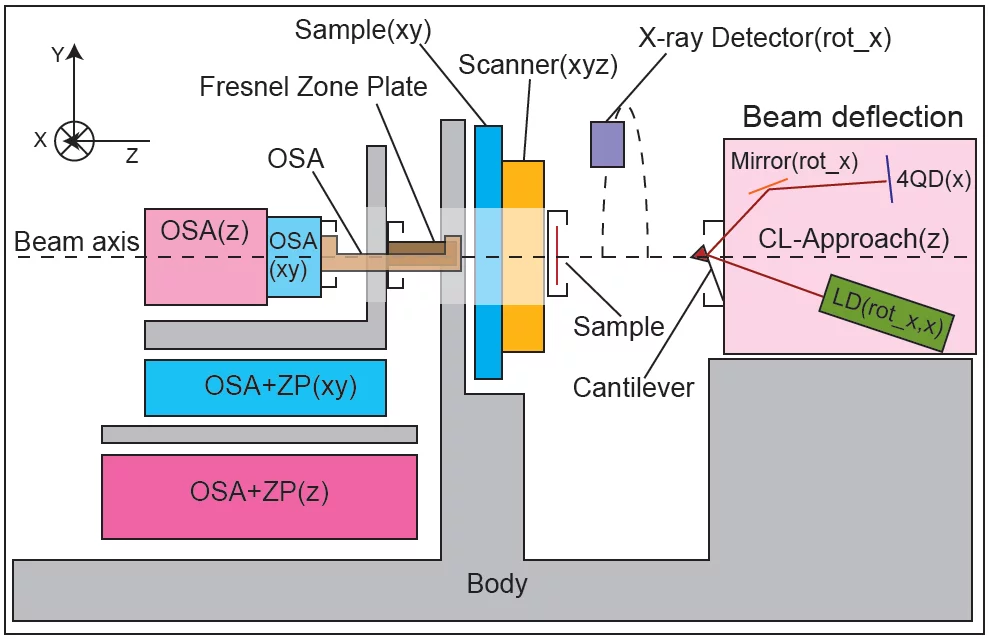The NanoXAS endstation consists of a scanning transmission X-ray microscope (STXM) in combination with a scanning probe microscope (SPM). By combining these techniques, the NanoXAS is able to obtain elemental and chemical composition, oxidation states, molecular orientation, topography, surface forces, as well as electric and magnetic properties on a variety of specimens with nanoscale resolution. A Fresnel zone plate focuses the monochromatic x-rays onto a semi-transparent sample. An optical sorting aperture (OSA) filter optimizes transmission of the first diffraction order and blocks out other orders. Several detectors and detection modes can be employed depending on the type of study. The sample is scanned through the x-rays using a fine closed-loop piezo scanner (range 40 um x 40 um x 6 um).
Zone plate
The zone plates used at NanoXAS provide a balance between efficiency, focal length, and resolution. To a first approximation, the resolution of the instrument is similar to the outermost zone width of the zone plate. Two zone plates are mounted in the NanoXAS endstation with outermost zone widths of 40 nm and 30 nm, and were manufactured at PSI in the laboratory for micro and nanotechnology (LMN).Detectors
A number of different detector types are available for enabling different experiments. Non-standard detectors are only available at the discretion of the beamline staff.| Detector | Notes |
|---|---|
| Silicon Avalanche Photodiode (APD) |
Silicon avalanche photodiode.
Transmission measurements by avalanche photo diode. |
| Channeltron |
Channeltron detector.
Surface sensitive electron detection can be performed simultaneously with x-ray transmission measurements. |
| Scanning Probe Tip |
SPM tip.
Conventional detection by SPM tip. |
In-situ views
Other specifications
| Property | Notes |
|---|---|
| Pressure | 10E-8 mbar |
| Temperature | RT (or resistive heating) |
| Flux | 1E13 ph/s @ 300 eV |
| FZP diameter | 240 um |
| FZP outermost zone width | 40 nm |
| OSA diameter | 40 um |
| Energy range | 270-1800 eV |
| Focal length | 7748 um @ 1000 eV |
Partners and Collaborators
This project is a collaboration between EMPA, PSI, and University of Erlangen-Nuremberg:








